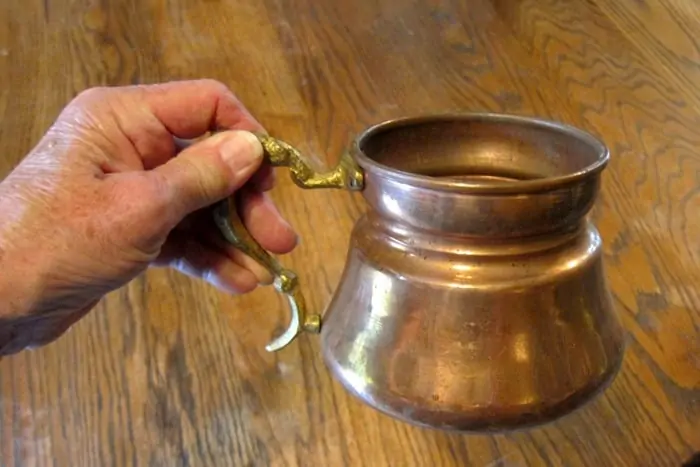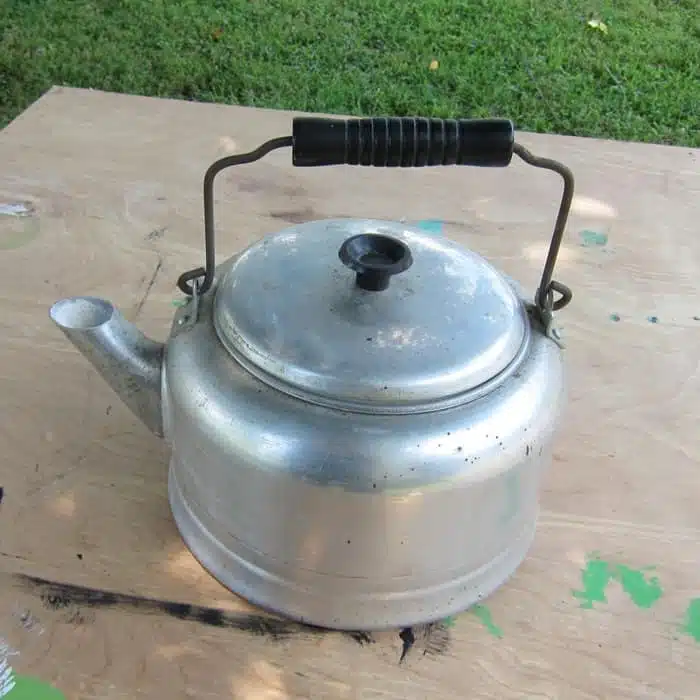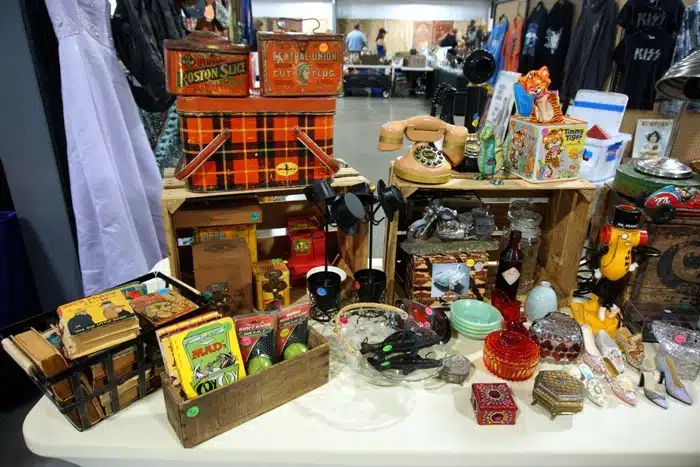Kitchen Items I Do Not Buy At Thrift Stores
As an Amazon Associate, I earn from qualifying purchases.
You guys know how much I love my thrift stores. I love finding things to reuse or reinvent but there are some items I pass on. Even though I might save sometimes it’s just not worth it.
Some of the items I avoid at the thrift store have to do with food preparation, cooking, or serving. Food safety standards can change, and items that were considered safe in the past might not be today. If I buy any of these items they are to repurpose into something else. Here are 12 kitchen items you should think twice about buying used.
Copper Cookware
Copper cookware can make an amazing focal point for kitchen decor especially if it is vintage, but you shouldn’t cook with it. The interior lining of copper cookware is tin and it doesn’t hold up very well to high-heat cooking. A damaged tin lining may lead to copper leaching into your food as you cook and you don’t want that.
Canning Jars and Lids
There are always plenty of Mason jars and lids for canning on the shelves at most thrift stores and you can get them for a great price. If you want to use them for canning food, you should skip the thrift store and buy new ones. There is no way of knowing whether or not they can handle the pressure of a modern-day pressure canner.
Wooden Cutting Boards
Wooden cutting boards, especially vintage ones, look cool and they can be fantastic decor for your kitchen, but you shouldn’t buy them to use them. You don’t know how those second-hand cutting boards have been used, and you don’t know whether the wood or the sealant is still in good condition.
Nonstick Cookware
Safety standards for non-stick cookware can change drastically over time. What was once considered a safe coating several years ago, may not be now, and when you purchase nonstick pans at the thrift store you don’t know what kind of nonstick coating was used or if it is still considered safe. Nonstick pans with scratches or pitting can leach harmful chemicals into your food, even if the coating is still deemed safe by today’s standards.
Blender
If you are shopping for a blender it is best to avoid those found in the thrift store. Even if the motor works great, the blades may be damaged or there may be small cracks or leaks in the food cup. These are damages you probably won’t notice until you go to use it, and by then you may have a big mess on your hands.
Vintage Ceramics
Vintage ceramics are beautiful to look at and great for decor, but you shouldn’t use them for eating and drinking. The paints used in vintage ceramics may contain high levels of lead, which can leach into your food. This is especially true of vintage ceramic mugs with hot, acidic beverages like coffee. Leave the ceramics at the thrift store or on your shelf for decoration.
Slow Cooker
Slow cookers are relatively inexpensive, and you can be confident that a new one will work, and work efficiently. You don’t have that guarantee with an older slow cooker from the thrift store. It may not heat evenly, it may not reach or hold the required temperatures which can leave you with undercooked or overcooked meals. This kitchen item should stay on the thrift store shelves.
Small, Inexpensive Kitchen Appliances
There’s simply no need to buy a toaster or a hand mixer for $10 at the thrift store, not knowing if it will work when you get home when you can buy a brand new one that will work for years for $15. Check the price for a brand-new item before buying a used one. There might only be a difference of a few dollars.
Leaded Crystal Dinnerware
Crystal pieces are beautiful to display, however, vintage crystal kitchen items are something to be wary of or avoid altogether. Antique and vintage crystal may contain dangerous levels of lead. They are fine to display empty for decoration, or to serve out of them immediately, but storing food or beverages in them long term for consumption can be dangerous because the lead can infuse into food.
Coffee Maker

If you drink coffee regularly you will be glad that you purchased your coffee maker new, and not at the thrift store. You can get a brand-new coffee maker for less than $30, and while the one at the thrift store is probably cheaper, how clean is it? Old coffee makers can be full of mold and bacteria that you can’t see which poses a health hazard and can make your morning cup of Joe taste awful.
Aluminum Cookware
Old aluminum pots, pans, and kettles, especially those with dents and scratches may leach chemicals into your food while you are cooking. This is particularly true with acidic foods like tomatoes. If you are looking for cookware at the thrift store stick with cast iron or stainless steel to reduce your chances of chemical exposure.
Electric Grills
Finding a used electric grill on the thrift store shelf may seem like a great score but it got donated for a reason. Those reasons might include difficulty cleaning, plates that can’t be removed, a damaged nonstick surface, or uneven heating. A new electric grill will have removable plates that are dishwasher safe, a non-stick surface in perfect condition, and temperature controls that work. Something to consider before purchasing one that might not be all that you hoped for.













Very good advice, Kathy. Look for stainless steel if you are going to buy pots and pans. What do you think?